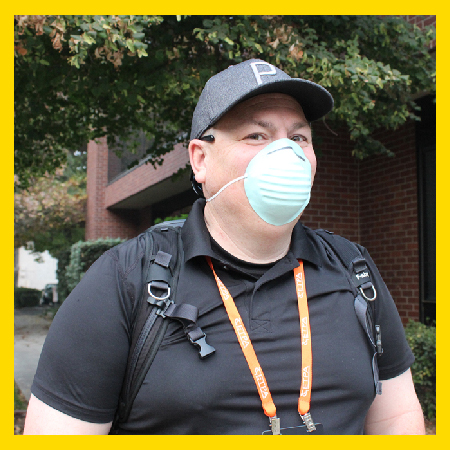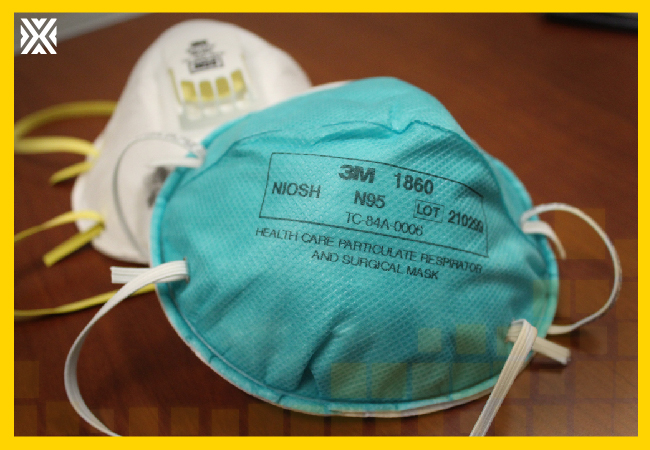Currency
November 29, 2018

The local hardware stores he checked Tuesday didn’t have the more substantial respirator mask that public health officials recommend to defend against the harmful wildfire smoke that is blanketing communities across the state. One pharmacy he contacted was selling loose-fitting surgical masks for only a quarter.
“No one has them,” said Lewsadder, 41, who was visiting the state capital from Los Angeles for an IT conference. So, for now, the dust mask would have to do: “Something is better than nothing,” he said.
Unfortunately, Lewsadder is wrong.
The type of mask you wear matters very much if you don’t want to inhale harmful pollutants, experts say.

And as deadly fires burn in Northern and Southern California, destroying communities and lives, millions of people outside the burn zones are exposed to the dangerous smoke that’s billowing into their communities and settling like dark shrouds.
Wildfire smoke is dangerous because it contains fine particulates that can lodge deep into the lungs, which can cause or worsen respiratory issues, such as asthma. Some groups are especially vulnerable, including children and older people.
The particulate matter floating across much of Northern California in the past week has registered more than 18 times the recommended levels by the World Health Organization. Such levels can trigger acute symptoms like difficulty breathing and headaches — even in otherwise healthy people.
Health experts agree that the best defense is to stay indoors.
But many also suggest that if you must go outside for a prolonged period, it’s best to wear the right kind of mask — especially if you have a health condition such as asthma, heart problems or emphysema.
Health professionals and firefighters are fitted for the right mask, but the general public is not.
So what kind of mask is the best?
Not the dust mask that Lewsadder was wearing. Or the surgical masks that loop around your ears. Forget wearing a bandana or holding a tissue over your mouth — those won’t protect your lungs.
The California Governor’s Office of Emergency Services and the California Department of Public Health recommend “N95” respirators or “P100” masks, both of which are approved by the National Institute for Occupational Safety and Health for health care workers and firefighters.
Those simple-but-sophisticated masks are intended to block at least 95 percent of the hazardous and tiny particulate matter — known as PM2.5 — that spews from wildfire smoke. At 2.5 microns or less in diameter, the particles of PM2.5 can’t even be seen by the naked eye, said Dr. John Balmes, a professor of environmental health sciences at the University of California-Berkeley. (For comparison, a human hair can measure as little as 16 microns in diameter.)
“No one has them,” said Lewsadder, 41, who was visiting the state capital from Los Angeles for an IT conference. So, for now, the dust mask would have to do: “Something is better than nothing,” he said.
Unfortunately, Lewsadder is wrong.
The type of mask you wear matters very much if you don’t want to inhale harmful pollutants, experts say.

And as deadly fires burn in Northern and Southern California, destroying communities and lives, millions of people outside the burn zones are exposed to the dangerous smoke that’s billowing into their communities and settling like dark shrouds.
Wildfire smoke is dangerous because it contains fine particulates that can lodge deep into the lungs, which can cause or worsen respiratory issues, such as asthma. Some groups are especially vulnerable, including children and older people.
The particulate matter floating across much of Northern California in the past week has registered more than 18 times the recommended levels by the World Health Organization. Such levels can trigger acute symptoms like difficulty breathing and headaches — even in otherwise healthy people.
Health experts agree that the best defense is to stay indoors.
But many also suggest that if you must go outside for a prolonged period, it’s best to wear the right kind of mask — especially if you have a health condition such as asthma, heart problems or emphysema.
Health professionals and firefighters are fitted for the right mask, but the general public is not.
So what kind of mask is the best?
Not the dust mask that Lewsadder was wearing. Or the surgical masks that loop around your ears. Forget wearing a bandana or holding a tissue over your mouth — those won’t protect your lungs.
The California Governor’s Office of Emergency Services and the California Department of Public Health recommend “N95” respirators or “P100” masks, both of which are approved by the National Institute for Occupational Safety and Health for health care workers and firefighters.
Those simple-but-sophisticated masks are intended to block at least 95 percent of the hazardous and tiny particulate matter — known as PM2.5 — that spews from wildfire smoke. At 2.5 microns or less in diameter, the particles of PM2.5 can’t even be seen by the naked eye, said Dr. John Balmes, a professor of environmental health sciences at the University of California-Berkeley. (For comparison, a human hair can measure as little as 16 microns in diameter.)









